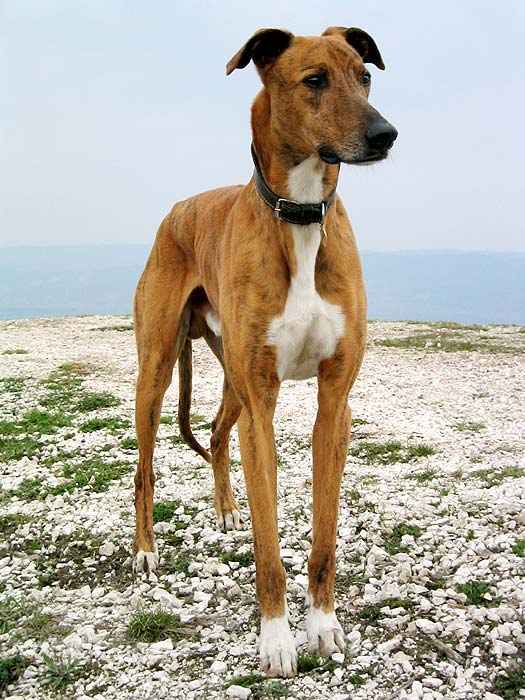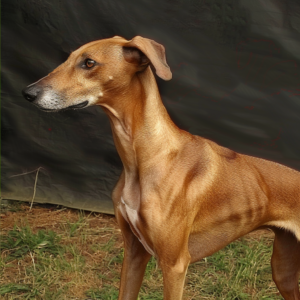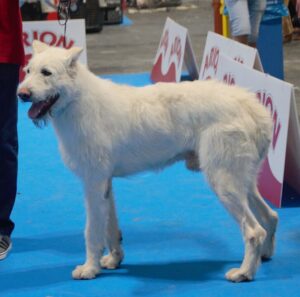The Hungarian Greyhound is also known as the Magyar Agar. This large sighthound has been used for coursing game as well as racing and he excels at long distance running over uneven terrain. Don’t let his delicate appearance fool you – this is a rugged and tough breed. Although similar in looks to his relative the (English) Greyhound, he is heavier boned, thicker-skinned and should be longer than he is tall as compared to the Greyhound’s more square outline. The muzzle is shorter and the head more wedge-shaped. Ancient as well as rare, he is recognized by the UKC but numbers are low in the United States.
Although smooth-coated, the Hungarian Greyhound will grow slightly longer hair during cooler weather. As it is also dense and covers a thick skin, he is more resilient than other sighthounds to cold weather. It wouldn’t be a bad idea to provide the hound a coat on particularly cold days, as one should always make sure that dogs are comfortable in regards to temperature, but overall he minds the cold much less than similar breeds. Fairly adaptable, he could even be kept in an outdoor kennel however only under the circumstances that he be given a huge amount of exercise and interaction with people on a daily basis!
Hungarian Greyhounds do need daily exercise despite their otherwise couch-potato ways. While they love to sleep most of the day away, when not resting they need plenty of time to run and stretch their legs. The best homes have a securely fenced yard in which the hound can free-run, in addition to a daily walk of at least an hour! This is more than many other sighthound breeds need, so prospective owners must take note of their higher-than-average demands in this regard. Some owners have successfully kept them in apartments, which is definitely do-able because they are so unobtrusive and calm, however this means an even higher exercise requirement must be fulfilled.
Hungarian Greyhounds make fantastic companions for those who live an active lifestyle, and who are able to provide the hound with plenty of socialization throughout their lives. These hounds are generally passive/submissive and tend to do well in homes with multiple dogs, children and other pets (although outdoor cats might be problematic). They are loyal to those whom they know and trust, and will show quiet affection towards their family. They also can make good watch dogs and, while they are not generally great guard dog material, they do have some guarding instinct.
The Hungarian Greyhound can be easy to train as he is very smart, although he cannot be trained in the “normal” way that might benefit a Lab or similar people-pleasing breed. Independent and not usually keen on following commands just for the sake of following commands, he needs to know what’s in it for him! Furthermore, you probably won’t get very far teaching him to retrieve a stick or ball without extensive work. It is recommended to start training while young in order to introduce him to the concept. While most are used in the “running sports” such as lure coursing, field coursing or racing, it is entirely possible to train and even compete with a Hungarian Greyhound in obedience as long as you put in the work.
The average life span of a Hungarian Greyhound is 12-14 years and they are usually fairly healthy dogs. This said, all breeds and mixed breeds can develop health issues and the Hungarian Greyhound is no exception. Epilepsy, Progressive Retinal Atrophy (an eye condition) and thyroid disease have all been reported. Make sure to obtain from a breeder who screens for these diseases to minimize the risk. All in all, most are remarkably healthy and easy to care for in terms of veterinary care and grooming.




